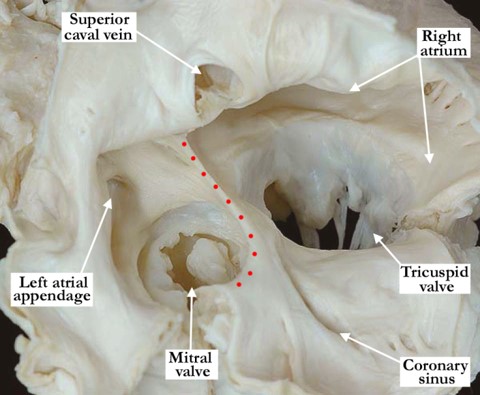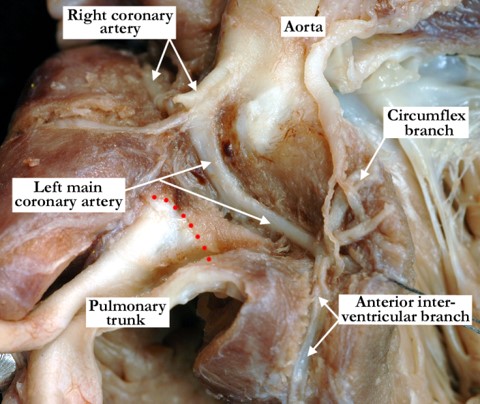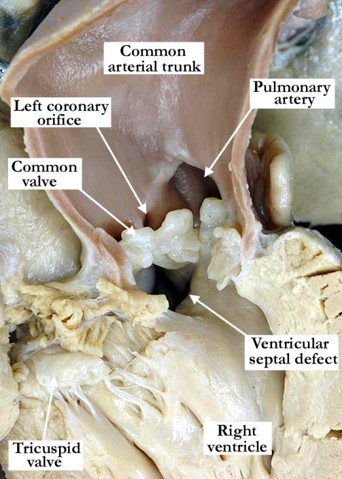06.04.11 – Congenital anomaly of left-sided atrioventricular valve in double inlet ventricle
IPCCC Term CONGENITAL ANOMALY OF LEFT-SIDED ATRIOVENTRICULAR VALVE IN DOUBLE INLET VENTRICLE
IPCCC Code 06.04.11
ICD-11 Code PENDING
Synonyms PENDING
Abbreviations PENDING
IPCCC Definition A congenital cardiac malformation in association with double inlet ventricle (excluding common atrioventricular valve) in which the atrioventricular valve morphology cannot be determined. This term should be used for the left-sided atrioventricular valve in those hearts.
[restabs alignment=”osc-tabs-right” pills=”nav-pills” responsive=”true” icon=”true” text=”More”][restab title=”Anatomic Specimen” active=”active”]
 |
This heart is viewed from posterior to anterior and has been cut in a four chamber echocardiographic plane. There is a double inlet left ventricle with an abnormality of the left-sided atrioventricular valve. It straddles the interventricular septum with the tension apparatus extending across the ventricular septal defect into the rudimentary, incomplete right ventricle. This heart was explanted following a Fontan procedure. Note the remnant of the right-sided atrial baffle (red star). |
[/restab][restab title=”Echocardiogram”]Content for Echocardiogram[/restab][restab title=”Computerized Axial Tomography”]Content for Computerized Axial Tomography[/restab][restab title=”MRI”]MRI[/restab][restab title=”Angiography”]Content for Angiography[/restab][restab title=”Intraoperative Videos”]Content for Intraoperative Videos[/restab][restab title=”Other”]Other[/restab][/restabs]



